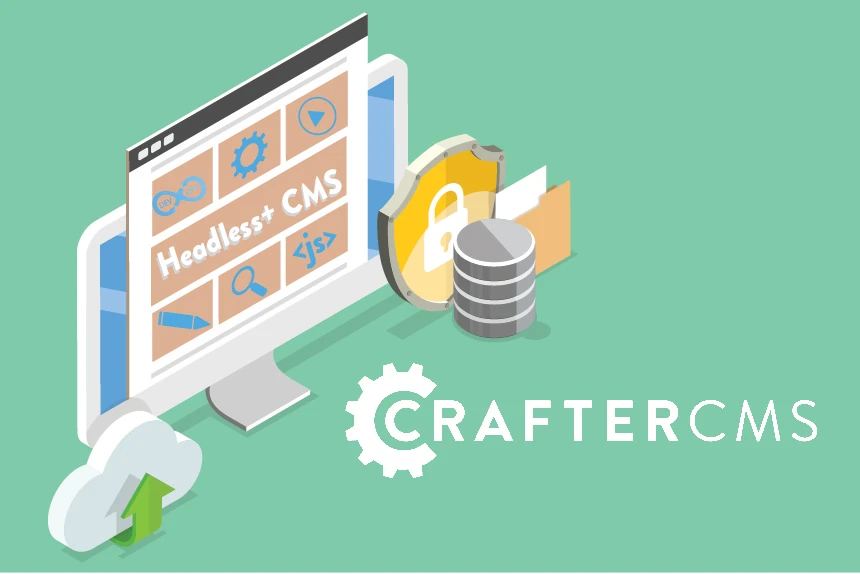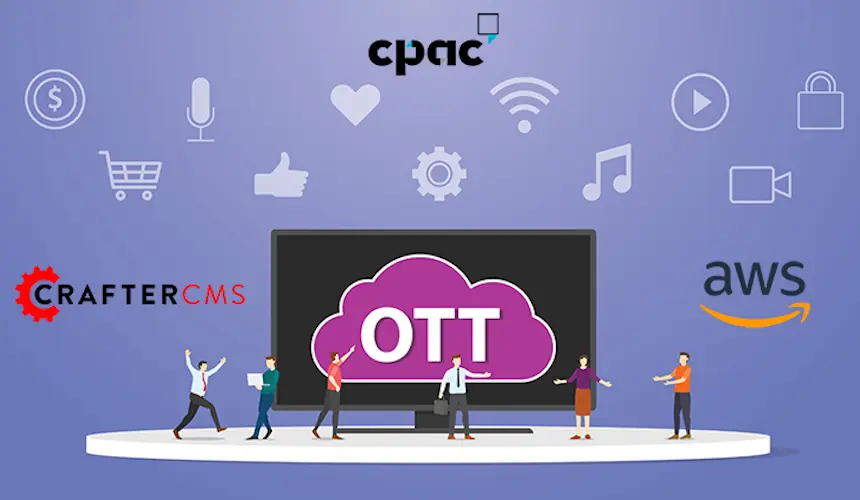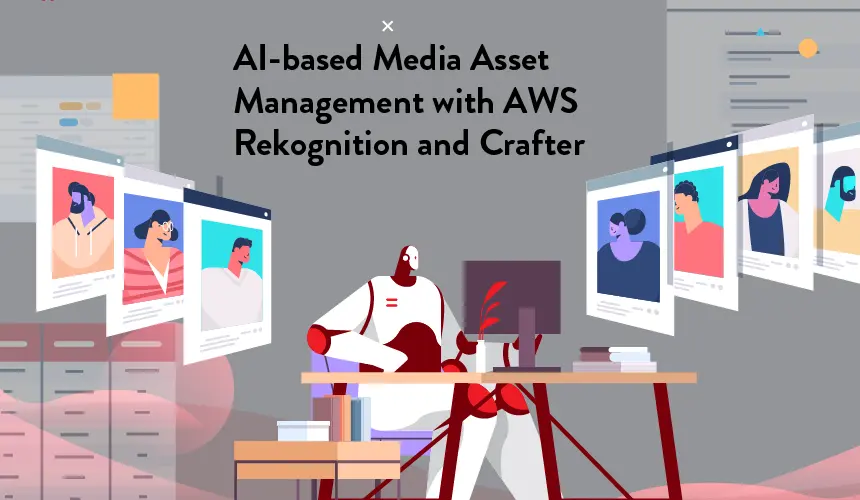What is Headless Plus: The Next Phase of Headless CMS Technology

Mike Vertal

The modern digital environment requires enterprises to focus on creating a seamless experience across multiple channels. Personalization, omnichannel content delivery and developer flexibility are becoming table-stakes in this new landscape, and brands are on the lookout for the right technology to help them keep up. Traditional content management systems no longer facilitate these experiences as they don’t provide the flexibility necessary for delivering content to multiple channels. Not to mention, these legacy systems lack the functionality and agility required to support multidisciplinary content and IT teams looking to constantly innovate. As a result, enterprises have been turning to headless architecture to create the next stage of digital experiences. A headless-only approach moves the needle forward compared to legacy systems, but some limitations still need to be addressed.
The Benefits of The Headless CMS Approach
- Centralized Content Repository: The primary purpose of a CMS is to house all content assets in a centralized location. This centralized architecture has remained a constant today in most CMS platforms, even as headless content delivery capabilities have grown. However, most headless CMS solutions are built around a database (whether SQL or NoSQL), and so they suffer from the 20 year old architectural problems of traditional CMSs. Poor developer workflow, poor collaboration between developer and content teams, and poor scalability are just some of the problems associated with a database-centric CMS architecture, whether it's headless or not.
- API-First Content Delivery: A headless CMS can serve content via APIs rather than as rendered web pages. This has enabled better content reusability and allowed developers to use modern front-end development frameworks to create new experiences. However, this API-based approach, when it's primarily focused just on content delivery, restricts the content authors who are tasked with managing content, creating and optimizing personalized experiences, and responding with agility to ever-changing requirements and opportunities.
- Front-End Agnostic: Headless CMS solutions generally support any front-end technologies. This enables developers to leverage client-side rendered applications and frameworks such as React, Angular and Vue to create digital experiences. However, simple headless CMS solutions can be limited when it comes to applications that rely on server-side rendered applications and technologies such as Node.js, Nextjs or Groovy, or for those times when an HTML5-based site is the best approach.
- Simple Content Authoring: Traditional CMS platforms may have been limited from a content delivery standpoint, but they provided templates and easy-to-use interfaces that helped content authors create content without much assistance. On the other hand, many headless CMS platforms typically provide a form-based, non-visual editing experience which doesn’t provide multi-channel in-context preview, enable personalization, or fit the modern content authoring workflow.
- Cloud Native: Many headless CMS platforms are available as public software-as-a-service (SaaS) deployments, and were built from the ground-up for the cloud. However, for many enterprise-level companies, a cloud-native system that supports both public and private clouds, or even a hybrid cloud approach, is a better fit. Enterprises have particular security, performance, and other requirements that drives the need for flexible deployment models, including private SaaS, self-managed public and/or private cloud, and managed services.
Headless+: The Evolution of the Headless CMS
Headless architecture alone isn’t sufficient to provide the functionality and user experience that leading enterprises require today. These experiences have expanded to include personalization, headless commerce, headless video, and more. Instead, the evolution of headless architecture must address the sophisticated needs of content authors, software developers and IT operations all working together in concert to build next gen digital experiences. At Crafter, we refer to this next evolution as headless "plus". Here are some of the features that headless+ provides:
Full WYSIWYG Content Authoring
Marketers and content authors need the powerful and easy-to-use content and experience creation tools they’re accustomed to from working with traditional CMS platforms, but even better. This includes WYSIWYG content authoring, drag and drop page building, in-context preview for any digital channel, creating and testing personalized experiences, and more. CrafterCMS provides a powerful and easy to use content authoring toolset, called Crafter Studio, the meets these needs of today’s content teams. Moreover, Crafter Studio is an extensible platform, so that enterprise-specific and more advanced requirements can be met through easy customization using modern development tools.
Distributed, Git-based Repository
CMS platforms need to not only support marketers in their quest to create engaging content, they also need to work on a platform that supports sophisticated version control, security, audits, and historical time travel of content. They also need to support modern development workflows that include continuous integration and continuous delivery combined with uninterrupted, continuous publishing (CI/CD/CP). CrafterCMS is built for comprehensive content management for all types of content-driven digital experiences, as well as advanced developer workflow support. Developers benefit from multi-file versioning, branching and more. Meanwhile, content authors benefit from all the versioning, security, and history tracking features of Git without having to know the first thing about Git and its operation. Crafter Studio provides a user-friendly content authoring system that shields them from the underlying Git technicalities.
DevContentOps
DevOps facilitates the swift delivery of software applications, enabling companies to build and operate software products rapidly. When DevOps is working as it should, new features and functionality can be introduced without interrupting other activities, while improving customer experience, stability, and reliability. CrafterCMS extends the benefits of DevOps to content-driven software applications, products, and digital experiences. With our unique support for DevContentOps processes, software development teams work collaboratively with content teams to continuously release new software features, publish new content updates, and deliver digital customer experiences faster than ever before. For example, code may be moved forward from development environments to production, and content may be moved back from production environments with simple push and pull operations. Teams can work in small batch sizes, and can automate their processes with integrations to CI/CD pipelines and tooling. DevContentOps enables a high rate of innovation needed in today’s digital landscape.
Decoupled Architecture
Simple headless-only CMS vendors think that “decoupled” means that the end user UI/UX is decoupled from the content repository. However, a truly decoupled architecture is one where content authoring is decoupled from an API-first, headless content delivery engine. This truly decoupled architecture of headless+ offers more scalability, security and reliability. CrafterCMS was designed as a decoupled system from the beginning. Content authors utilize the tools and technologies they need for content creation, in-context preview, and approval workflows, and publishing to the totally decoupled and separate content delivery system (called Crafter Engine). DevOps scales the content delivery system to meet the end-user experience requirements to deliver blazing fast, secure, and personalized experiences to anyone on the planet.
Extensible Developer Platform
Headless is pretty much just a content API in the cloud. Headless+ is a true developer platform, allowing backend development, integration, and extensibility in addition to providing rich content APIs. It provides extensible APIs that allow teams to customize backend functionality and integrate third-party systems as necessary. CrafterCMS allows developers to easily extend the system with Groovy, Java, or Node.js. Moreover, Crafter allows you to build custom APIs to meet application-specific requirements and to integrate easily with third-party systems and other repositories. By focusing on an API-first architecture, built-in scripting support and modular packaging, CrafterCMS supports rapid development of innovative digital experiences.
Client-side and Server-Side Rendering
Client-side rendering is an essential part of any headless CMS platform, but most headless CMS’s leave off there. Headless+ technology also supports server-side rendered (SSR) applications. CrafterCMS provides full support if you need to develop on the server. Crafter natively supports Java and Groovy, and integrates easily with Node, Next, or any other Javascript-based server-side rendering platform. With the help of universal RESTful APIs, native GraphQL, and platform-oriented SDKs, developers are given the freedom to use the tools and processes that work best for them. For example, not all modern applications need to be SPAs. CrafterCMS provides native support for HTML5 sites via Freemarker (SSR). Developers get to choose the tools they want for the front-end, such as React and Vue via our REST and GraphQL APIs for SPAs; and for those microsites, landing pages, and other sites where HTML5 is a better and easier fit, you can rely on CrafterCMS’s comprehensive support for all types of modern digital experience applications and sites.
Deployment Flexibility
Headless CMS platforms need to be flexible in their deployment, whether an organization needs a self-managed version or a fully managed SaaS. CrafterCMS can be deployed on-prem, or in a private cloud, or in public clouds such as Amazon AWS, Microsoft Azure, or Google Cloud. Crafter also provides a fully-managed private SaaS solution called Crafter Cloud, which leverages Amazon AWS’ power to provide a cost-effective, agile, enterprise CMS solution.
Take Digital Innovation to the Next Level with CrafterCMS
Leading enterprises have taken to the ongoing headless CMS revolution, but the headless-only approach doesn’t provide the necessary capabilities and tools that today’s modern enterprises require. CrafterCMS and its headless+ architecture provides the comprehensive features and benefits that developer teams, content teams, operations teams need to truly innovate and take their digital experiences to the next level.
Related Posts

Websites Are Dead?

Mike Vertal

No-Code Experience Building for Marketers & Designers

Amanda Lee

Is Your CMS MACH-Ready? A Practical Guide for Enterprise Architects

Sara Williams

Composable DXP vs Traditional DXP: Why Enterprises Choose CrafterCMS

Amanda Jones
Related Resources
-

CrafterCMS at eBay: The Universal Content Platform for eBay.com
Webcast
-

Personalized Digital Experiences for a Cruise Liner
Webcast
-

Introducing CrafterCMS v4.0
Webcast
-

Modernizing Video Delivery and Content Management at CPAC, A Canadian Nationwide Broadcaster
Webcast
-

AI-based Media Asset Management with AWS Rekognition and CrafterCMS
Webcast





